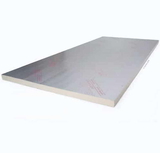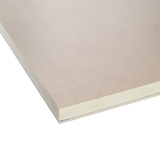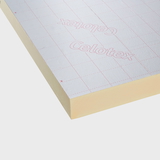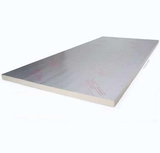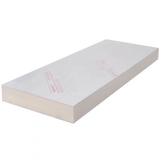- Blogs
- Celotex TB4000 PIR Insulation Board: A Complete UK Guide for Construction Professionals
Celotex TB4000 PIR Insulation Board: A Complete UK Guide for Construction Professionals
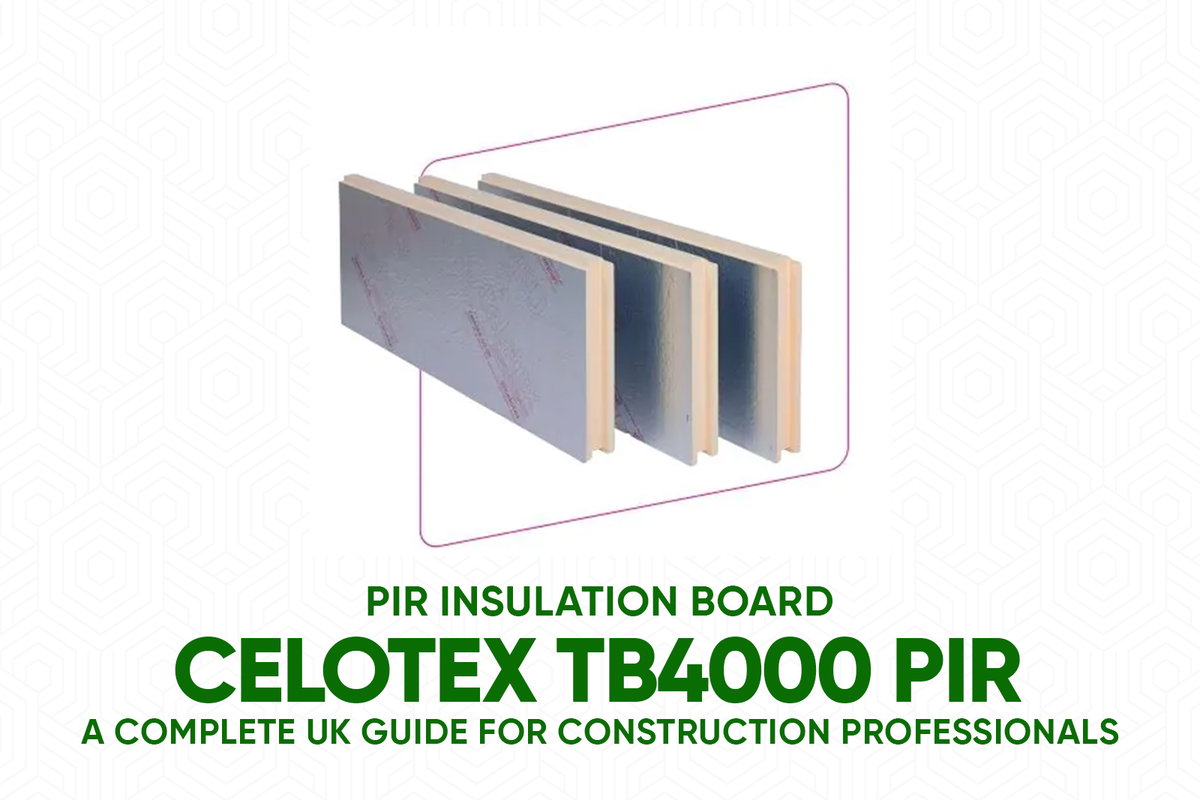
TLDR:
Celotex TB4000 is a multi-purpose rigid Polyisocyanurate (PIR) insulation board used widely in UK construction for walls, floors, and roofs. It features a PIR foam core and low-emissivity foil facings on both sides, delivering a thermal conductivity of 0.022 W/mK. Its primary design function is to provide effective thermal insulation and to address localised thermal bridges, helping projects meet the stringent energy efficiency targets set by Part L of the UK Building Regulations. It is available in thicknesses from 20mm to 40mm. A critical regulatory restriction applies: Celotex TB4000 must not be used in the external walls of buildings with a storey 11 metres or more in height.
An Introduction to Celotex TB4000![]()
Celotex TB4000 is a high-performance, rigid thermal insulation board found on construction sites across the United Kingdom. As a multi-purpose product, it is engineered for use in a wide variety of building elements, including ground floors, masonry walls, timber frame systems, and both pitched and flat roofs. Its principal function is to provide an effective thermal barrier, reducing heat loss from buildings and contributing to long-term energy savings.
The product is specifically developed to provide simple and effective solutions for overcoming localised thermal bridges. The increasing focus within UK building science and regulations on whole-building energy performance means that merely insulating large, flat areas of a structure is no longer sufficient. Heat loss through junctions—where walls meet floors, roofs, or window openings—can significantly compromise a building's overall thermal efficiency. Products like TB4000, available in thinner profiles, are designed as a tool to address these complex heat loss paths, reflecting a more sophisticated approach to building physics driven by regulatory demands.
Within the broader Celotex PIR insulation range, which includes thicker boards like the GA4000 and XR4000 series, TB4000 represents the thinner end of the spectrum. It is typically available in thicknesses from 20mm to 40mm, making it particularly suitable for applications where space is limited or for targeted use in specific construction details to eliminate cold spots. This guide provides a technical overview of the board's material composition, performance characteristics, certified applications, and its place within the UK's regulatory framework.
Material Composition and Core Properties
The performance of Celotex TB4000 is a result of its composite structure, which combines a highly efficient insulating core with performance-enhancing facings. It is not simply a piece of foam; its effectiveness stems from the synergy between these two components, which are engineered to combat different forms of heat transfer.
The Polyisocyanurate (PIR) Core
The central component of the board is a rigid, closed-cell polyisocyanurate (PIR) foam. PIR is a thermoset plastic produced from similar chemical precursors to polyurethane (PUR), but the manufacturing process differs significantly. It involves a higher proportion of Methylene Diphenyl Diisocyanate (MDI) reacting with a polyester-derived polyol. This reaction creates a distinct and more robust chemical structure, characterised by strong isocyanurate ring molecules, which gives PIR greater thermal stability compared to PUR.
The manufacturing process involves a continuous lamination system. A mixture of the primary chemicals, polyol and MDI, is combined with a blowing agent. This mixture expands into a foam that hardens between two foil facings, forming a rigid board that is then cut to size. The blowing agent used in Celotex TB4000 has zero ozone depletion potential (zero ODP) and a low global warming potential (GWP), aligning the product with modern environmental standards.
The physical structure of the PIR core consists of millions of tiny, independent, closed cells. These cells trap a low-conductivity gas, which severely restricts the movement of heat through the material by both conduction and convection. This cellular structure is the key to the board's low thermal conductivity.
Low Emissivity Foil Facings
Celotex TB4000 is faced on both sides with a composite aluminium foil that has low thermal emissivity. Emissivity is a measure of a surface's ability to radiate energy as thermal radiation. Materials with high emissivity, such as brick or plaster (around 0.90), are effective at radiating heat. In contrast, polished aluminium foil has a very low emissivity value of approximately 0.03, meaning it radiates very little heat and reflects a high proportion of incoming thermal radiation.
This property provides a significant functional benefit when the board is installed facing a sealed air cavity within a building element, such as in a timber frame wall or under a rafter line. The foil facing reflects radiant heat across the air gap, reducing this form of heat transfer and improving the overall thermal performance of the construction assembly. This dual-action mechanism—where the PIR core resists conductive heat transfer and the foil facings resist radiant heat transfer—is what makes the product so effective, particularly in constructions where an air gap is present. The foil also acts as an effective vapour control layer, helping to prevent moisture from passing through the building fabric.
Technical Specifications and Performance Data
For specification purposes, the performance of Celotex TB4000 is declared according to harmonised British and European standards. This ensures that data is consistent, verifiable, and suitable for use in building performance calculations.
Thermal Performance: The most critical property for an insulation product is its thermal conductivity, or lambda value. For Celotex TB4000, the declared thermal conductivity is 0.022 W/mK. This value is determined in accordance with the standard BS EN 13165. A lower lambda value indicates a better insulating material, and this figure places PIR foam among the most efficient commonly available insulation products.
Fire Performance: The reaction to fire of Celotex TB4000 is officially classified as Euroclass F under the standard BS EN 13501-1. A Euroclass F classification indicates that the product has not been tested or has failed to meet the criteria for any other class. For specifiers and installers, this means the product is considered combustible and is not provided with a rating for its contribution to fire resistance or for smoke emission. This classification has significant implications for where the product can be legally used, as detailed in the regulations section.
Physical Properties: The board possesses mechanical properties that make it suitable for a range of building applications.
-
Compressive Strength: The compressive strength at 10% deformation is declared as being equal to or greater than 120 kPa. This level of strength allows it to be used in applications such as ground floors, where it will be subject to loading from screeds and general foot traffic.
-
Dimensional Stability: The board demonstrates good dimensional stability under varying temperature and humidity conditions, as defined by the codes DS(70,90)3 and DS(-20,-)1 in its Declaration of Performance. This ensures the board will not significantly shrink or warp after installation, which could otherwise lead to gaps and a reduction in performance.
-
Water Vapour Resistance: The product has a high resistance to the passage of water vapour, with a declared value of over 150 MNs/g. This property, combined with the foil facings, allows the board to act as a barrier to moisture movement.
Dimensions: Celotex TB4000 is manufactured in a standard board size of 2400mm x 1200mm and is available in a range of thicknesses, typically 20mm, 25mm, 30mm, 35mm, and 40mm.
| Characteristic | Standard | Declared Performance |
| Thermal Conductivity | BS EN 13165 | 0.022 W/mK |
| Reaction to Fire | BS EN 13501-1 | Euroclass F |
| Compressive Strength | BS EN 826 | ≥ 120 kPa |
| Dimensional Stability | BS EN 1604 | DS(70,90)3, DS(-20,-)1 |
| Water Vapour Resistance | BS EN 12086 | >150 MNs/g |
| Standard Board Size | BS EN 822 | 2400mm x 1200mm |
| Thickness Range | BS EN 823 | 20mm – 40mm |
Certified Applications in UK Building Projects
In the UK construction market, third-party certification is a critical indicator of a product's fitness for purpose. Celotex TB4000 has been assessed by the British Board of Agrément (BBA) for a range of specific applications. BBA certification provides assurance to specifiers, building control bodies, and warranty providers that the product, when installed correctly, can meet the requirements of the Building Regulations. This reliance on independent verification is a key feature of the UK industry, where assurance and risk management are paramount. A product without such certification for a given use would face significant barriers to market acceptance.
BBA Certificate 17/5405 covers the use of Celotex TB4000 in the following applications :
Floor Insulation:
- In solid concrete ground-bearing floors.
- In suspended concrete beam and block floors.
- Between the joists of suspended timber ground floors.
Wall Insulation:
-
As an internal insulation layer for solid masonry walls, a method commonly known as dry lining.
-
Within the structure of timber-framed and steel-framed wall systems, where it is typically installed between the vertical studs.
Roof Insulation:
-
In pitched roof constructions, where its thinner profile makes it well-suited as an insulation layer fixed below the rafters. This application is often used in combination with thicker insulation between the rafters to create a "warm roof" design and to effectively cut the thermal bridge created by the timber rafters themselves.
-
Within the build-up of warm flat roofs.
Best Practices for Installation and Handling ![]()
The designed thermal performance of Celotex TB4000 can only be achieved if the product is stored, handled, and installed correctly. The quality of workmanship on site is as important as the quality of the product itself. Poor installation practices, particularly the failure to ensure a continuous and gap-free insulation layer, can lead to thermal bridging and air leakage, which will significantly degrade the real-world performance of the building element.
On-Site Storage and Handling
To prevent damage and maintain performance, boards must be stored flat and raised off the ground to avoid contact with moisture. If stored outside, packs should be covered with an opaque, waterproof sheet to protect them from rain and prolonged exposure to sunlight. Care should be taken when handling the boards to avoid crushing or damaging the edges and corners; any significantly damaged boards should not be used.
Cutting and Preparation
Boards can be cut to size using a fine-toothed saw or a sharp utility knife against a straight edge. During cutting, dust will be produced. It is essential to work in a well-ventilated area and wear appropriate personal protective equipment (PPE), including safety glasses, gloves to protect from the sharp foil edges, and a suitable dust mask to prevent inhalation of particles.
Core Installation Principles
Regardless of the application, two principles are fundamental to a successful installation:
-
Continuity: The primary objective is to form an unbroken insulating envelope. To achieve this, all board joints must be tightly butted together. Gaps between boards create thermal bridges that allow heat to bypass the insulation.
-
Sealing: To maximise thermal performance and create an effective air and vapour barrier, the joints between butted boards should be sealed with a suitable foil tape. This prevents air leakage and the passage of moisture.
Application-Specific Guidance
-
Floors: When installing over a concrete slab, a damp-proof membrane (DPM) must be laid first. Boards should be laid in a brick-bond pattern to stagger the joints and should be tightly butted. A perimeter upstand of insulation is critical at the junction with external walls to prevent a significant thermal bridge at the edge of the floor.
-
Timber Frame Walls: Boards should be cut to fit snugly between the vertical studs, ensuring they are pushed back against the external sheathing with no air gaps behind them. A separate vapour control layer (VCL) is typically required and is installed over the internal face of the studs before the plasterboard is fixed.
-
Pitched Roofs (Between Rafters): In a traditional "cold roof" design, it is vital to maintain a clear, ventilated air gap of at least 50mm between the top surface of the insulation and the underside of the roofing membrane or sarking felt. This ventilation path is necessary to allow moisture vapour to escape and prevent the risk of condensation forming within the roof structure.
Compliance with UK Standards and Building Regulations
Celotex TB4000 is manufactured to meet established UK and European standards, and its primary purpose is to help building projects comply with the increasingly stringent energy efficiency requirements of the UK Building Regulations.
Manufacturing and Quality Standards
The product is manufactured in accordance with BS EN 13165, the harmonised standard for "Factory made rigid polyurethane foam (PU) products". This standard forms the basis for its UKCA marking, which demonstrates conformity with UK product safety requirements. The manufacturing facilities are certified to
ISO 9001 for Quality Management and ISO 14001 for Environmental Management, indicating adherence to formalised systems for production consistency and environmental control.
BRE Green Guide Rating of A.
Part L of the Building Regulations ![]()
In England, Approved Document L, Volume 1: Dwellings sets the standards for the conservation of fuel and power in residential buildings. A central requirement of this regulation is that building elements like walls, floors, and roofs must achieve specific target
U-values. A U-value, measured in watts per square metre Kelvin (W/m2K), quantifies the rate of heat loss through a building element; a lower U-value signifies better thermal performance.
Using high-performance insulation with a low thermal conductivity, such as Celotex TB4000, is a primary method for constructing building elements that meet the demanding U-value targets set by Part L. The table below summarises some of the key U-value targets for new domestic buildings and extensions in England.
| Building Element | New Build (Notional Dwelling) U-value (W/m2K) | Extension (Limiting U-value) U-value (W/m2K |
| Wall | 0.18 | 0.28 |
| Floor | 0.13 | 0.18 |
| Pitched Roof (at rafter level) | 0.13 | 0.18 |
| Flat Roof | 0.13 | 0.18 |
Critical Use Limitation: The 11-Metre Rule
A crucial regulatory constraint applies to the use of Celotex TB4000. Following the Grenfell Tower fire and the subsequent inquiry, the UK Building Regulations were amended to improve the fire safety of external walls. These changes have had a direct impact on the specification of insulation products.
As a result of these amendments, Celotex TB4000, which has a Euroclass F reaction to fire classification, must not be used in the external walls of buildings that have a storey with a floor level 11 metres or more above ground level. The regulations for buildings of this height mandate the use of insulation products that are classified as non-combustible or of limited combustibility. This safety-driven requirement overrides the product's thermal performance characteristics in these specific applications and represents a fundamental division in the UK insulation market based on building height. It is the responsibility of the designer and specifier to ensure full compliance with this rule.
Conclusion
Celotex TB4000 is a versatile and technically proficient PIR insulation board, engineered to help UK construction projects achieve high standards of energy efficiency. Its composite structure, combining a low-conductivity PIR foam core with low-emissivity foil facings, provides a dual-action approach to reducing heat loss through both conduction and radiation.
With a declared thermal conductivity of 0.022 W/mK and a wide range of BBA-certified applications for floors, walls, and roofs, the product is a valuable tool for meeting the U-value targets stipulated in Part L of the Building Regulations. However, its effectiveness is fundamentally linked to correct installation, where the continuity of the insulation layer and the sealing of joints are paramount to prevent thermal bridging and air leakage.
Specifiers and installers must also be acutely aware of the product's regulatory limitations. The Euroclass F fire classification means that Celotex TB4000 is legally prohibited from use in the external walls of buildings with a storey 11 metres or more in height. Adherence to this critical safety regulation is non-negotiable. When used within its certified applications and in compliance with all relevant standards, Celotex TB4000 provides a reliable solution for improving the thermal performance of buildings.
Legal Disclaimer
The information contained in this article is for general information purposes only. The information is provided based on publicly available technical data and regulatory documents at the time of writing. While we endeavour to keep the information up-to-date and correct, we make no representations or warranties of any kind, express or implied, about the completeness, accuracy, reliability, or suitability of the information for any particular purpose.
This content does not constitute professional design, engineering, or legal advice. It should not be used as a substitute for specific advice from a qualified professional and must not be relied upon for the specification of materials, the design of building elements, or the execution of construction work. Any reliance you place on such information is therefore strictly at your own risk.
Users should always consult the most current technical datasheets, Declarations of Performance, and BBA certificates directly from the manufacturer, and seek guidance from architects, structural engineers, or building control officers to ensure any proposed use complies with all applicable Building Regulations, standards, and legislation for their specific project. We shall not be liable for any loss or damage, including without limitation, indirect or consequential loss or damage, arising from the use of this information.

Samuel Hitch
Managing Director
Buy Insulation Online.
Leave A Reply
Your feedback is greatly appreciated, please comment on our content below. Your email address will not be published. Required fields are marked *



